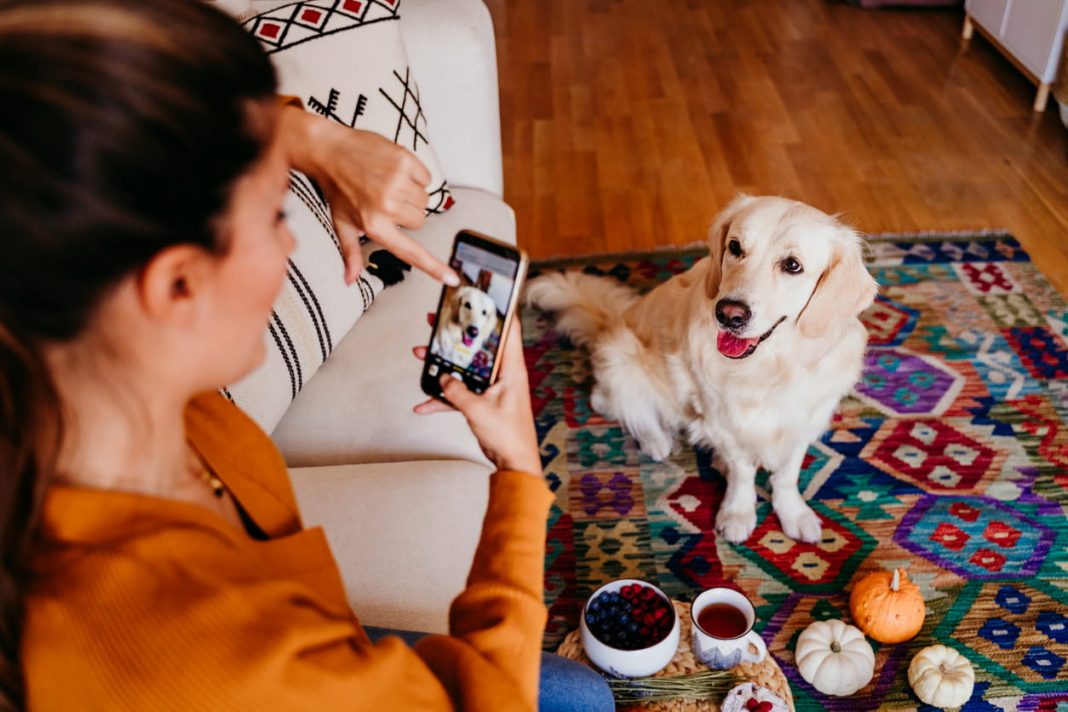We all love to make memories with our pets, but how do we best capture those memories to keep forever? By taking great pet photos of our furry family members! The Internet loves sharing cute photos of puppies, kittens, and any other adorable animal. If you have tried to take pet photos before, you’ll know it’s not the easiest task. Pets can be unpredictable, especially in unfamiliar situations. That’s why we have some tips to make taking photos fun for you and your pets. You don’t have to be a professional with fancy equipment, all you need is a smartphone and a lot of patience. Here is a short guide to taking some great pet photos:
- Pet’s needs come first
- Focus on personality
- Take a variety of photos
- Lighting: less is more
- All about the eyes
- Capture their attention
Pet’s needs come first
Self-explanatory: your pet is the one that matters in an animal photoshoot. As a pet owner, you are bound to have an emotional connection that makes you sensitive to their needs. Take advantage of your pet’s mood and don’t work against it. A mellow tone and calm instructions will eventually soothe any hyperactivity to get the great pet photos you desire. Pets will need to get accustomed to a device that they don’t have much experience with. Familiarize your pet with camera clicks or any new settings or props before you expect beautiful results. Just like training your pet, patience is key for the best results. Taking a lot of pictures will lead to having an array of great pet photos to edit and share online.
Focus on personality
These pictures are meant for your pet to feel special and a part of your family, so make it a goal to focus on personality. Each pet has unique characteristics that can be seen in a picture without ever meeting them. Choosing a couple of these personality traits will enhance your already great pet photos. For example, taking some sleepy pictures of a lazy dog or playful pictures of a hyper kitten. Another way to capture your pet’s personality is by using props. Make these photos about what your pet loves to do most and what people should first know about them.
Take a variety of photos
Gathering ideas for a shot list can be a difficult part of the creative photography process. After all, there are only so many different perspectives and concepts to photograph. That’s why we have some great pet photo ideas to shoot when it seems like you’ve run out of ideas. Here are four types of creative pet photos you should be taking:
- Action: Take photos of your pet playing, leaping, stretching, running, and more! Experimenting with actions and angles is what makes pet photography so fun. Remember to take as many photos as possible and adjust the shutter speed for freeze-framed action.
- Close-up/Portrait: Portraits are usually what people think about when they think about pet photos. Training your pet will ensure the calmest photo session for detailed or tight close-ups.
- Silly: Just like humans, pets make some silly faces. Capture the faces of your pet with a confused, curious, or sleepy mood. Or play with them for a big goofy grin!
- Sleeping: Your pet is bound to be tired after a long day of looking fabulous. Luckily, dogs and cats look adorable when they sleep too. Quietly take some photos of them curled up, well-rested, and staying still. Be gentle enough not to wake them up!
Lighting: less is more
There’s no need for an impressive set of lights or a wide array of expensive tools. In fact, having fewer (and less expensive) lighting sources can yield more great pet photos! Lighting can make or break a photo, and editing can’t solve every lighting issue. Animals tend to be afraid of the flashing lights and can cause all of your pet photos to feature red or green eyes. That’s why you should always photograph your pet in natural lighting. Either letting in sunlight from a window or shooting outside will create the best pictures with smooth highlights and shadows. On especially sunny days, turning down exposure will help soften the image and capture your pet’s true colors (literally). If you must use artificial lighting indoors, use lamps instead of camera flash to illuminate your pet’s best features.
All about the eyes
Speaking of best features, what you want to capture in every photo is your pet’s beautiful eyes. Often your pet’s eyes reveal their personality and are their most distinguishing trait. Shooting your pet on their eye level makes for the best pet portraits and for feeling the most emotional connection through the camera. Check if your camera has an eye autofocus (AF) feature, this will aid in keeping the eyes in your photo sharp. Capturing this strong eye contact or just focusing on their expressions gives the photo intensity and warmth to remember forever.
Capture their attention
Having trouble with your pet paying attention to the camera? Guide their attention with some of their favorite distractions. The promise of a treat and the noise of their favorite toy are sure to pique their interest. Bring these close to your lens when you want that vital eye contact with the camera. Interacting with your pet by cheering them on and making unique noises gets them distracted from any unsureness from getting their picture taken. It’s also bound to get pets in an alert, upright posture and in a happy mood for a big smile. No model deserves to go unpaid, so reward your pet with small treats as you go to keep them encouraged to look cute for the camera.
Like this content and want more? Read more about pets and wildlife here. And be sure to subscribe to our newsletter at Dock Line Magazine so you don’t miss out on getting more free content like this straight to your email!















